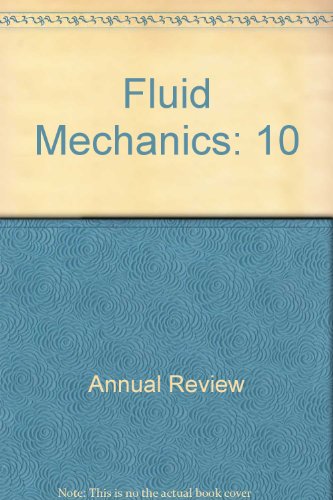FLEET Velocimetry for Aerodynamics
IF 30.2
1区 工程技术
Q1 MECHANICS
引用次数: 8
Abstract
Long-lasting emission from femtosecond excitation of nitrogen-based flows shows promise as a useful mechanism for a molecular tagging velocimetry instrument. The technique, known as femtosecond laser electronic excitation tagging (FLEET), was invented at Princeton a decade ago and has quickly been adopted and used in a variety of high-speed ground test flow facilities. The short temporal scales offered by femtosecond amplifiers permit nonresonant multiphoton excitation, dissociation, and weak ionization of a gaseous medium near the beam's focus without the generation of a laser spark observed with nanosecond systems. Gated, intensified imaging of the resulting emission enables the tracking of tagged molecules, thereby measuring one to three components of velocity. Effects of local heating and acoustic disturbances can be mitigated with the selection of a shorter-wavelength excitation source. This review surveys the development of FLEET over the decade since its inception, as it has been implemented in several test facilities to make accurate, precise, and seedless velocimetry measurements for studying complex high-speed flows.用于空气动力学的FLEET速度计
氮基流飞秒激发的长时间发射有望成为分子标记测速仪的有用机制。这项技术被称为飞秒激光电子激发标记(FLEET),十年前在普林斯顿大学发明,并迅速被采用和用于各种高速地面测试流设施。飞秒放大器提供的短时间尺度允许光束焦点附近的气体介质的非共振多光子激发、离解和弱电离,而不会产生用纳秒系统观察到的激光火花。对产生的发射进行门控、增强成像,可以跟踪标记分子,从而测量一到三个速度分量。通过选择较短波长的激发源,可以减轻局部加热和声学干扰的影响。这篇综述综述了FLEET自成立以来十年的发展,因为它已经在几个测试设施中实施,以进行准确、精确和无种子的测速测量,用于研究复杂的高速流。
本文章由计算机程序翻译,如有差异,请以英文原文为准。
求助全文
约1分钟内获得全文
求助全文
来源期刊
CiteScore
54.00
自引率
0.40%
发文量
43
期刊介绍:
The Annual Review of Fluid Mechanics is a longstanding publication dating back to 1969 that explores noteworthy advancements in the field of fluid mechanics. Its comprehensive coverage includes various topics such as the historical and foundational aspects of fluid mechanics, non-newtonian fluids and rheology, both incompressible and compressible fluids, plasma flow, flow stability, multi-phase flows, heat and species transport, fluid flow control, combustion, turbulence, shock waves, and explosions.
Recently, an important development has occurred for this journal. It has transitioned from a gated access model to an open access platform through Annual Reviews' innovative Subscribe to Open program. Consequently, all articles published in the current volume are now freely accessible to the public under a Creative Commons Attribution (CC BY) license.
This new approach not only ensures broader dissemination of research in fluid mechanics but also fosters a more inclusive and collaborative scientific community.

 求助内容:
求助内容: 应助结果提醒方式:
应助结果提醒方式:


